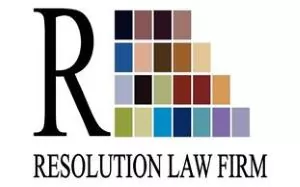- in United States
- with readers working within the Property and Retail & Leisure industries
- within Corporate/Commercial Law, Real Estate and Construction and Family and Matrimonial topic(s)
A trademark is a form of intellectual property that is used to distinguish the goods or services of one business from those of another. A trademark can take many forms, including a logo, a word or phrase, a slogan, a sound, or even a color. In essence, a trademark serves as a symbol that identifies the source of a particular product or service.
Purpose of a Trademark
The primary purpose of a trademark is to protect a business's brand and prevent confusion in the marketplace. By establishing a unique trademark, a business can distinguish its products or services from those of its competitors. This distinction can be critical in building brand recognition and customer loyalty.
Registration of Trademark in Nigeria
The trademark is registered through the Trademarks, Patents and Designs Registry, Commercial Law Department of the Ministry of Trade and Investment. Before making the application, the trademark must be searched at the appropriate class to check whether it is not in conflict with any existing mark.
Trademark Classification
The NICE classification is an international system used to classify goods and services for the purposes of trademark registration. It was established by the Nice Agreement in 1957 and is currently maintained by the World Intellectual Property Organization (WIPO).
The NICE classification consists of 45 classes, with classes 1-34 covering goods and classes 35-45 covering services. Each class represents a specific category of goods or services, and trademarks are registered for specific classes based on the goods or services that they are intended to be used for.
The 45 classes of the NICE classification are:
Classes 1-34 (Goods)
- Chemicals
- Paints
- Cosmetics and cleaning preparations
- Lubricants and fuels
- Pharmaceuticals
- Metals and metal goods
- Machinery and machine tools
- Hand tools
- Electrical and scientific apparatus
- Medical apparatus
- Environmental control apparatus
- Vehicles
- Firearms
- Jewelry and precious stones
- Musical instruments
- Paper goods and printed matter
- Rubber goods
- Leather goods
- Non-metallic building materials
- Furniture and articles not otherwise classified
- Housewares and glass
- Cordage and fibers
- Yarns and threads
- Fabrics
- Clothing
- Fancy goods
- Floor coverings
- Toys and sporting goods
- Meats and processed foods
- Staple foods
- Natural agricultural products
- Beers and beverages
- Wines and spirits
- Tobacco products
Classes 35-45 (Services)
- Advertising and business services
- Insurance and financial services
- Building construction and repair services
- Telecommunications services
- Transportation and storage services
- Treatment of materials services
- Education and entertainment services
- Computer and scientific services
- Hotel and restaurant services
- Medical and veterinary services
- Personal and legal services
The NICE classification system is used by many countries around the world, including Nigeria, to classify and register trademarks for specific goods and services. It provides a standardized framework for trademark registration and helps to ensure consistency and clarity in the registration process.
Steps for Trademark Registration in Nigeria
In Nigeria, the procedure for trademark registration involves several steps, which are:
- Conduct a search: Before applying for a trademark registration, it is important to conduct a search to ensure that the proposed trademark does not infringe on any existing trademarks. This can be done by searching the Nigerian Trademarks Registry files. Currently, a trademark search cannot be conducted online in Nigeria, the search must be manually conducted at the registry.
- File an application: Once the search has been conducted and the proposed trademark is deemed available, an application can be filed with the Trademarks Registry. The application should include the name, address, and nationality of the applicant, a clear representation of the trademark, and the goods or services for which the trademark will be used.
- Examination: After filing the application, the Trademarks Registry will examine the application to ensure that it complies with the relevant laws and regulations. If there are any issues, the Registry may issue an objection or request for additional information.
- Publication: Once the application has been accepted, it will be published in the Trademarks Journal. This allows interested parties to oppose the registration if they believe that the trademark infringes on their rights.
- Opposition: If an opposition is filed, the Trademarks Registry will investigate the matter and may hold a hearing to determine whether the opposition is valid. A valid opposition must be filed within two months after the publication of the trademark
- Issuance of certificate: If there are no oppositions, or if the oppositions have been resolved in favor of the applicant, the Trademarks Registry will issue a certificate of registration.
The process of trademark registration in Nigeria usually takes between 12 to 24 months, depending on various factors such as the number of objections and oppositions filed. It is recommended to seek the advice of a legal professional experienced in Nigerian trademark law to ensure that the application is filed correctly and to minimize the risk of objections or oppositions.
Current Development on Trademark Applications
Currently, the trademark applications in Nigeria can now be filed online, however, the search can only still be done manually, as the past trademarks issued in Nigeria are not yet fully uploaded online, making it impossible for a successful search to be conducted online. Once the trademark has been accepted or registered, the registration acceptance can be downloaded or printed online via the agent's portal. Although the certificates can be paid for online after the successful publications, but the issuance of the certificates still require additional processing at the registry.
Trademark Infringement
Trademark infringement occurs when another party uses a registered trademark without permission. In cases of infringement, a trademark owner can take legal action to protect their trademark rights. Remedies for trademark infringement can include injunctive relief, damages, and the seizure of infringing goods.
Conclusion
In conclusion, trademarks are a critical aspect of branding and are essential to the success of any business. By establishing a unique trademark, businesses can protect their intellectual property and distinguish their products or services from those of their competitors.
The content of this article is intended to provide a general guide to the subject matter. Specialist advice should be sought about your specific circumstances.


